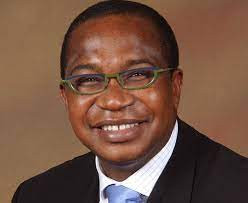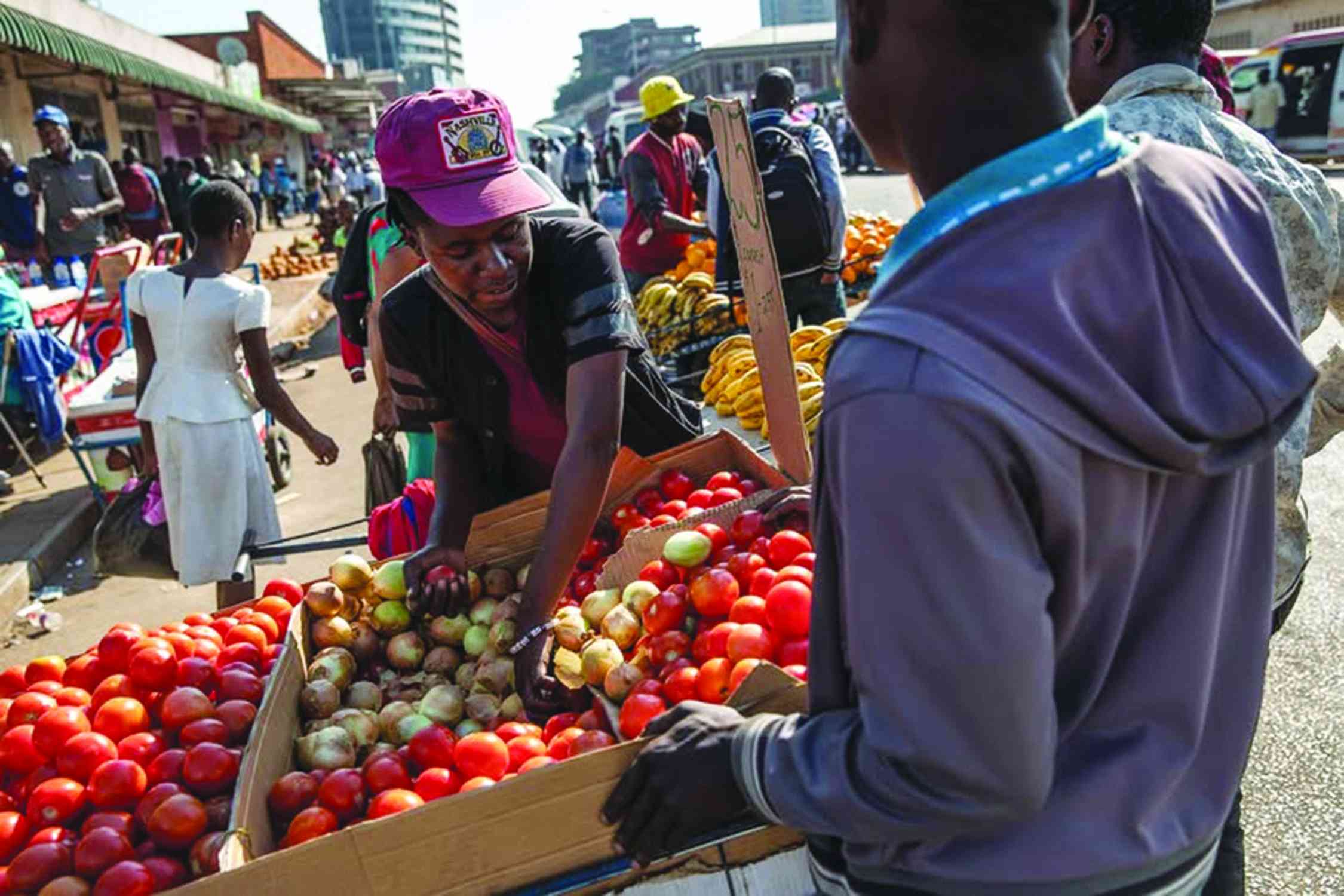
THE Zimbabwean government presented a ZW$4,5trillion budget (21% of 2021 GDP,) for the 2023 fiscal year.
The government expects to collect revenues totaling ZW$3,9 billion (18% of GDP, auction rate at US$1:ZW$654,86), thus resulting in a budget deficit of ZW$0,6trillion which will be funded through issuance of treasury bills (TBs), issuance of US dollar denominated Victoria Falls Stock Exchange (VFEX) bonds and external loan disbursements.
As has been the case in the past five years, Primary and Secondary Education and Health Care got the most funds on paper with ZW$631,3 billion and ZW$473,7 billion allocated to them respectively.
The Ministry of Lands and Agriculture was allocated ZW$362,5 billion, while Defense got ZW$331,1 billion.
Of note is the ZW$161,7 billion allocated to the Office of the President and Cabinet, which is more than the ZW$144,6 billion allocated to the Ministry of Transport and Infrastructure Development.
The Office of the President and Cabinet oversees the function of national security, intelligence, and foreign travel for the highest office in the land.
Real GDP growth
The budget estimated that Zimbabwe’s nominal GDP for 2023 will hit ZW$21,8 trillion (approximately US$25,65 billion if the market exchange rateis used).
- ‘Inflation could shoot to 700% by April next year’
- New perspectives: Inflation control critical for economic growth
- Inflation spike: Why interest rates aren’t the answer
- Village Rhapsody: Govt must ensure that devolution works
Keep Reading
Treasury expects the economy to grow by 4% in 2022, a decline from 5,8% projected earlier this year. The growth is anchored on the anticipated favourable rainfall season, restoration of inflation and exchange rate stability, coupled with growth from agriculture, mining, real estate and manufacturing sectors.
Key risks for 2023 emanate from the uneven distribution of rainfall, power cutsand contingent liabilities from State Enterprises and Parastatals (SEPs).
To achieve the above growth, treasury assumes that there will be favourable international commodity prices, tight monetary and continued use of the multi-currency.
On inflation
On inflation, the government simply set a month-on-month inflation target range of between 1% and 3%. It has avoided stating an annual inflation forecast after recurring disasters where optimistic forecasts exposed the government’s dismalfailure to tackle inflation, restore local currency stability and reign in on money supply by the powerful central bank.
In the 2022 national budget, the forecast was that inflation would end the year below 35%. This figure was later adjusted to 58%. Annual inflation is expected to close 2022 in triple digit figures just below the 255% achieved in November.
On VAT
Treasury reinstated the 15% Value Added Tax (VAT) with effect from January 1 2023. VAT had been reduced to 14,5% in January of 2020 to reduce the load on consumers and the business sector.
VAT on imports and on local sales contributes close to 25% of government revenues, hence the 0,5% will help in making up for the gap in losses encountered from tax defaults.
However, the review will be immediately passed on to the consumer in the form of price increases to cover for the 0,5% hike. Zimbabwe’s peers in the region have comparative VAT rates with Botswana and Angola at 14% while South Africa and Namibia levy 15%, Zambia 16% and Mozambique 17%.
From the selected countries above, the average VAT is 15,2%, which may justify the hike from treasury. The budget also proposed to introduce stiffer penalties for those who delay paying their taxes to take advantage of inflation, thus paying a lesser amount. Delayed taxes will attract an interest of 200% per annum while other delays will attract a penalty of US$30 per day. Overdue taxes will be calculated using the official exchange rate.
Dominant recurring costs
Recurring expenditure in the form of civil service remuneration and pensions remain high when paired to government revenues. This leaves the government with limited funds for capital expenditure especially on infrastructure maintenance and development.
In 2023, employment costs (ZW$2,2 trillion) will constitute 52,4% of total expenditure. Inflation has suppressed civil service remuneration at a rate below revenue growth, with employment costs declining from the 80-90% levels that prevailed from 2014-2018.
Considering the unresolved demands for salary review from the civil service, there is need to either rationalize the civil service or significantly improve revenue collection to meet the demand for paying living wages for the 400 000 plus staff on government payroll.
Customs duty
Treasury has also reinstated import duty on basic consumer goods. Early this year, the government suspended duty on basic commodities such as rice, flour, sugar, washing powder, maize meal, soap, cooking oil, milk powder and baby formula amongst others.
The government had suspended duty on imported basic goods to stabilise prices in a tiff with local producers who are often accused of sabotaging the nation and profiteering.
The move will be a blow to low-income households who rely on such savings to spread limited income.
However, business will welcome the move as it levels the playing field between locally manufactured consumer goods and those which are being imported. Thus, the move will improve demand for goods made locally and subsequently increase capacity utilisation.
Agriculture funding
Under the National Enhanced Agriculture Productivity Scheme (Formerly Command Agriculture), the government has issued an equivalent of US$154,6 million in local currency as a guarantee to AFC Holdings to raise resources for procuring 2022/23 Agric inputs. The mobilised funds will be used to finance production of maize, soya beans, sunflower and traditional grains.
Treasury pointed that it is capacitating CBZ Agro Yields to finance the 2022/23 summer cropping season through payment of farmer commitments.
The proposals add to the ZW$362,5 billion allocated to the ministry of lands and agriculture. Thus, the government maintains its conflicting role as the financier, regulator, consumer, and buyer of strategic agricultural commodities in the country.
For sustainable agricultural productivity, Zimbabwe needs to have a commodities exchange market where prices for agricultural commodities are determined by producers in line with demand and expected supply.
Inconsistent monetary, fiscal, and agricultural policies on grain marketing have dealt a huge blow to agriculture viability. This is the major reason why several small holder farmers have given up large tracts of land for other income generating activities such small scale mining.
On land tenure
The government is issuing securitized A2 permits, which are replacing the current offer letters to A1 farmers who did not have tenure documents. In addition, the issuance of 99-year leases has been reviewed and leases will be given based on the farmers’ annual production and productivity returns.
The above removes the need for farmers to apply and pay for assessment of farms to qualify for the lease. The above proposals mean that the government is not yet ready to give title deeds to the holders of land.
Most of Zimbabwe’s resettled farmers have no bankable title to their land which makes it worthless in asset terms and difficult to access credit from financial institutions.
The issued 99-year leases are not transferable, hence not appealing to the banking sector in an environment where confidence and policy consistency are in short supply.
The government should create a legal framework that makes the 99-year lease transferable and allow banks to hold the lease or any movable property as collateral for credit advanced to farmers.
Apart from compelling the borrowers (farmers) to service their loans, this will uncover the country’s economic value and mitigate risk for the financiers to support agricultural production.
Without title deeds for private sector funding, agricultural productivity will remain depressed as most indigenous farmers lack capital to produce at commercial level.
IMTT review
In a rare but welcome give in, treasury cut Intermediated Money Transfer Tax (IMTT) on USD transactions from 4% to 2% to match the tax on local currency transactions. Treasury also pointed that IMTT will not be charged on payments to wheat farmers who are projected to produce a record 380 000 tons of wheat this year.
Formal business players had hoped that since IMTT is levied on formal businesses that pay corporate tax, the budget should make the transaction tax deductible from corporate tax or VAT as is the case with other transaction taxes.
This would provide relief to hard-pressed tax compliant businesses. However, treasury is considering reviewing the regulation that requires depositors to surrender 20% of their foreign currency deposits using a manipulated exchange rate determined by the central bank.
Conclusion
As widely expected in a budget leading to harmonised elections, the budget has given priority to defence, agriculture and office of the president.
Inevitably, actual disbursements will be biased towards the three cost centres. On paper, the government has allocated more funds to education, health care and social services.
However, a lot still needs to be done in prioritising education and health care on the actual disbursement of funds. Selected ministries and departments get over 100% of their budget allocations within fourmonths while health, social services and education are sacrificed.
Funding from the donor community, multilateral and bilateral partners such as the United States and European Union (EU) dwarfs what the government allocates to its citizens.
The budget lacked on supply side incentives to boost production and exports. The country’s tax model needs to be simplified and remodeled to boost exports and local production instead of maintaining policies that make it easy to import or smuggle finished goods from China, Singapore, Zambia, and South Africa.
Bhoroma is an economic analyst. He holds an MBA from the University of Zimbabwe (UZ). — vbhoroma@gmail.com or Twitter @VictorBhoroma1.










